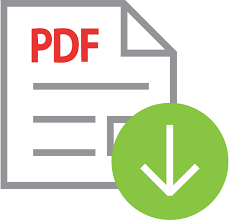An Analysis of Euphemism in Political News in the Jakarta Post Online Newspaper
 ), Umar Mono(2), Alemina Br Perangin-angin(3),
), Umar Mono(2), Alemina Br Perangin-angin(3), (1) Universitas Sumatera Utara
(2) Universitas Sumatera Utara
(3) Universitas Sumatera Utar
 Corresponding Author
Corresponding Author
Copyright (c) 2025 Umar Mono, Alemina Br Perangin-angin
DOI : https://doi.org/10.24036/ell.v14i1.130174
Full Text:
 Language : en
Language : en
Abstract
This study aims to determine the types of euphemisms and the functions of euphemisms found in the Jakarta Post online newspaper on political news. This study employed a descriptive qualitative method. The sources of the data were 15 news articles that contained euphemistic terms. In analyzing the data, the theory of Allan and Burridge (1991) was used to find out the types and functions of euphemisms found in the Jakarta Post online newspaper on political news. The result of this research shows that there are 34 data of euphemistic terms. There are four types of euphemisms found: metaphor, metonymy, hyperbole, and understatement. There are 11 data of metaphor, 8 data of metonymy, 6 data of hyperbole, 6 data of understatement, and 3 data of circumlocution. There are five functions of euphemism used in the 34 euphemism expressions. There are 16 euphemistic terms functioned as protective euphemism as shield and avoid forbidden, 7 euphemistic terms functioned as underhand euphemism to mystify and to misrepresent, 6 euphemistic terms functioned as uplifting euphemism to talk up and to inflate, 4 euphemistic terms functioned as the provocative euphemism to reveal and to inspire, and 1 euphemistic term functioned as cohesive euphemism to show solidarity and to help define the gang.
Keywords
References
Allan, Keith, and Kate Burridge. (1991) Euphemism & Dysphemism: Language Used as Shield and Weapon. New York: Oxford University Press.
Ary, D. (2009). Introduction to Research in Education Sector. Newyork: Maccmilan Publishing Company.
Bakhtiar, M. (2012). Communicative Function of Euphemisms in Persian. The Journal of International Social Research. Vol 5/ No. 20
Bell, R. T. (1976). Sociolinguistics: Goals, Approaches, and Problems. London: Batsford.
Bogdan, R. C., & Biklen, S. K. (1992). Qualitative Research for Education: An Introduction to Theory and Methods. Boston: Allyn and Bacon.
Deng, F. "An analysis of phonetic formation in English euphemism." Journal of Language Teaching and Research 7.3 (2016): 542-547.
Enricht, D. G. (1985). Fair of speech: The uses of euphemism. Oxford: Oxford University Press.
Hojati, A. "A study of euphemisms in the context of English-speaking media." International Journal of Linguistics 4.4 (2012): 552.
Hudson, R. A. (1996). Sociolinguistics. Cambridge. Cambridge University Press
Hughes, G. (2006). An Encyclopedia of Swearing: The Social History of Oaths, Profanity, Foul Language, and Ethnic Slurs in the English-speaking World. M.E. Sharpe.
Jordaan, Yolanda., Wiese, Melanie., Amade, Karim and De Clercq, Ermi. (2013) Content Analysis of Published Articles in the South African Journal of Economic and Management Sciences. SAJEMS NS.
Majhi, Sabitri., Jal, Chanda & Maharana, Bulu. (2016) Content Analysis of Journal Articles on Wiki in Science Direct Database. Library Philosophy and Practice (e-journal)
Miles, M. B., Huberman, A. M., & Saldaña, J. (2014). Qualitative Data Analysis: A methods sourcebook. Thousand Oaks, Califorinia: SAGE Publications, Inc.
Neaman, J. S., & Silver, C. G. (1990). Kind words: A thesaurus of euphemisms. New York: Avon Books.
O’Grady, W., Archibald, J., Arnoff, M., and Rees-Miller, J., (2000). Contemporarty Linguistics: An Introduction. Fourth Edition, New York: Bedford/St. Martin’s
Pinker, S. (2007). The Stuff of Thought: Language as a Window into Human Nature. Viking.
Ren, C. H. I., and H. A. O. Yu."Euphemism from sociolinguistics perspective." Studies in Sociology of Science4.4 (2013): 45-48.
Suryana. (2010). Metodologi Penelitian: Model Praktis Penelitian Kuantitatif dan Kualitatif. Buku Ajar Perkuliahan UPI.
Warren, Beatrice. "What euphemisms tell us about the interpretation of words." Studia linguistica 46.2 (1992): 128-172.
Wardhaugh, R., & Fuller, J. M. (2015). An Introduction to Sociolinguistics Seventh Edition. Oxford: Blackwell Publishing Ltd.
Yu, H. A. O., and C. H. I. Ren. "Analysis of English Semantic Change." Higher Education of Social Science 5.2 (2013): 61-64.
Yule, G. (2014). The study of language. Cambridge: Cambridge University Press.
 Article Metrics
Article Metrics
 Abstract Views : 18 times
Abstract Views : 18 times
 PDF Downloaded : 2 times
PDF Downloaded : 2 times
Refbacks
- There are currently no refbacks.
Copyright (c) 2025 Umar Mono, Alemina Br Perangin-angin

This work is licensed under a Creative Commons Attribution-NonCommercial 4.0 International License.












